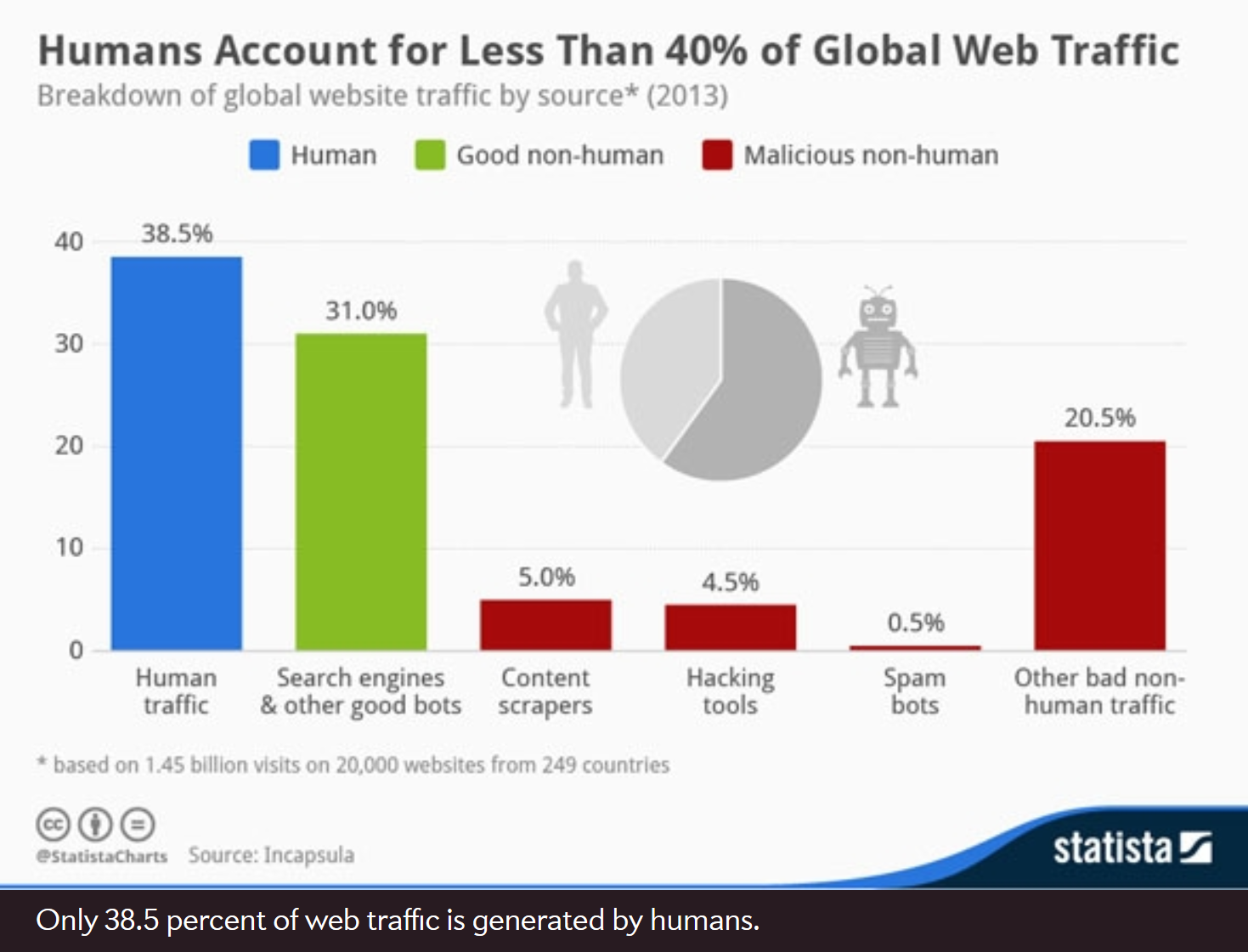I am happy to report that eQuest is now employing a more highly advanced bot filter that excludes known spiders and bots from job board candidate traffic statistics in its Big Data reporting.
Humans Account for Less Than 40% of Global Web Traffic
Bot traffic—including scrapers, hackers, spammers, impersonators—has been estimated to be as high as 61 percent of all traffic, according to a 2013 report by Incapsula. The sheer enormity of web traffic coming from bots not only hurts the ability of companies (utilizing career sites on the Internet) to accurately measure the success of their job posting, but also their ability to plan for the future. A swarm of bots could, in some circumstances, give you the false sense that a particular campaign or job board is working which could lead to poor job board investment in the future.
For career sites, bot traffic can provide an upside by inflating page-view numbers and ad revenue, but for Human Resource departments, it’s nothing but a pandemic.
Chart source: Statista
Job Board and
Social Media Sites
are as Susceptible to
Bot Traffic as any other
Website on the Internet.
As we continue to observe career site data across a spectrum that includes social media sites, job boards (large and small), and even niche-specific sites – we have discovered that they all are as susceptible to bot traffic as the general Internet. Our studies have found that 13% to 40% of what is known in the recruitment environment as “views-clicks-responses” are in all actuality – bogus.
And to my surprise – HR departments of some of the largest and most prestigious companies in the world are either unaware of “phantom” candidate traffic; are utilizing reports directly “from the source” that have not been properly filtered; or are combining direct-source reports in such a way that calculating and comparing simple trends or performance metrics across multiple boards is totally unreliable.
Recommendations for the future.
Confirm from your data source that they have “properly” filtered out bots from their reporting. This would include companies who report real-time candidate views and clicks in a dashboard on each published job posting.
If you are relying on “direct source” data (data provided directly from the job boards) contact their IT department and ask specifically what they are doing to eliminate bot traffic. Be aware that there are many job boards that are totally unaware that bot and spider traffic exists on their site.
If you have been given a dashboard to review job board performance the same above questions apply. Pretty graphs and charts mean nothing without the proper data to back it up.
Be careful of companies that rely on candidates clicking a box in the job posting area saying they are not a robot. One app, Google’s Recapcha, is a good start, however, we have found that candidates are simply unreliable when it comes to this type of self-identification.
If you are utilizing your own data reporting there is a simple way to identify bot traffic. In the case of Google Analytics, look for spikes in traffic coming from a single ISP domain. If that is the case you can create your own filter to exclude future hits from that specific location.
Bottom line – HR data, especially as it relates to job talent advertising, is, and will be, a key factor in determining your company’s spending budget – plain and simple. Anecdotal data (if you want to call it that) is old-school. Your reports should reflect a true and accurate accounting of your job performances.
By David Bernstein

